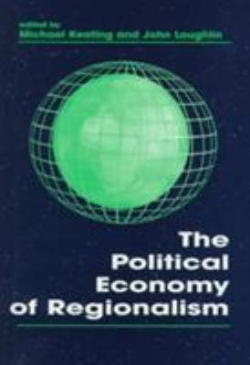The Political Economy of War and Peace (Recent Economic Thought)

Buy online ($)
Type
Book
Authors
Murray ( Wolfson )
ISBN 10
0792383109
Category
330-Economics-Regional Economics
[ Browse Items ]
Publication Year
1998
Publisher
Kluwer Academic Publishers, United States
Pages
347
Subject
War -- Economic aspects; Peace -- Economic aspects;
Tags
Abstract
cancer n. any malignant tumor . . . Metastasis may occur via the bloodstream or the lymphatic channels or across body cavities . . . setting up secondary tumors . . . Each individual primary tumor has its own pattern . . . There are probably many causative factors . . . Treatment. . . depends on the type of tumor, the site of the primary tumor and the extent of the spread. (Oxford Concise Medical Dictionary 1996, 97) Let us begin by stating the obvious. Acts of organized violence are not necessarily of human nature, but they are endogenous events arising within the an intrinsic part evolution of complex systems of social interaction. To be sure, all wars have features in common - people are killed and property is destroyed - but in their origin wars are likely to be at least as different as the social structures from which they arise. Consequently, it is unlikely that there can be a simple theory of the causes of war or the maintenance of peace. The fact that wars are historical events need not discourage us. On the contrary, we should focus our understanding of the dimensions of each conflict, or classes of conflict, on the conjuncture of causes at hand. It follows that the study of conflict must be an interdisciplinary one. It is or a penchant for eclecticism that leads to that conclusion, but the not humility multi-dimensionality of war itself.
Description
cancer n. any malignant tumor . . . Metastasis may occur via the bloodstream or the lymphatic channels or across body cavities . . . setting up secondary tumors . . . Each individual primary tumor has its own pattern . . . There are probably many causative factors . . . Treatment. . . depends on the type of tumor, the site of the primary tumor and the extent of the spread. (Oxford Concise Medical Dictionary 1996, 97) Let us begin by stating the obvious. Acts of organized violence are not necessarily of human nature, but they are endogenous events arising within the an intrinsic part evolution of complex systems of social interaction. To be sure, all wars have features in common - people are killed and property is destroyed - but in their origin wars are likely to be at least as different as the social structures from which they arise. Consequently, it is unlikely that there can be a simple theory of the causes of war or the maintenance of peace. The fact that wars are historical events need not discourage us. On the contrary, we should focus our understanding of the dimensions of each conflict, or classes of conflict, on the conjuncture of causes at hand. It follows that the study of conflict must be an interdisciplinary one. It is or a penchant for eclecticism that leads to that conclusion, but the not humility multi-dimensionality of war itself. - from Amzon
Biblio Notes
1. The Evolving National Security Strategy of The United States
by Carl H. Groth Jr..............................................................................p. 1
2. Defining Terrorism by Rear Admiral Yedidia Groll-Yaari...............................p. 29
3. The Economic Consequences of The American Civil War
by Roger L. Ransom............................................................................p. 49
4. John Maynard Keynes Architect of The Postwar Peace by John E. Elliott........p. 75
5. Dyads, Disputes and The Democratic Peace by William J. Dixon.................p. 103
6. Cooperation and Conflict Among Democracies: Why Do Democracies
Cooperate More and Fight Less? by Solomon W. Polachek and John Robst..p. 127
7. In a World of Cannibals Everyone Votes for War:Democracy and Peace Reconsidered by Murray Wolfson and Patrick James and Eric J. Solberg.........p. 155
8. Environmental Resource Scarcity and Conflict by Jane V. Hall and
Darwin C. Hall.................................................................................p. 177
9. Race, Rationality, and Behavior by Raymond Dacey................................p. 201
10. The Long and The Short of An Arms Race by David Kinsella and
Sam-man Chung..........................................................................p. 223
11. Theory of Moves and The Persian Gulf War by Tansa George Massoud.....p. 247
12. Moral Hazard and Conflict Intervention by Dane Rowlands and
David Carment...............................................................................p. 267
13. A Model of Dispute Sequences by Robert G. Muncaster and
Dina A. Zinnes...............................................................................p. 287
by Carl H. Groth Jr..............................................................................p. 1
2. Defining Terrorism by Rear Admiral Yedidia Groll-Yaari...............................p. 29
3. The Economic Consequences of The American Civil War
by Roger L. Ransom............................................................................p. 49
4. John Maynard Keynes Architect of The Postwar Peace by John E. Elliott........p. 75
5. Dyads, Disputes and The Democratic Peace by William J. Dixon.................p. 103
6. Cooperation and Conflict Among Democracies: Why Do Democracies
Cooperate More and Fight Less? by Solomon W. Polachek and John Robst..p. 127
7. In a World of Cannibals Everyone Votes for War:Democracy and Peace Reconsidered by Murray Wolfson and Patrick James and Eric J. Solberg.........p. 155
8. Environmental Resource Scarcity and Conflict by Jane V. Hall and
Darwin C. Hall.................................................................................p. 177
9. Race, Rationality, and Behavior by Raymond Dacey................................p. 201
10. The Long and The Short of An Arms Race by David Kinsella and
Sam-man Chung..........................................................................p. 223
11. Theory of Moves and The Persian Gulf War by Tansa George Massoud.....p. 247
12. Moral Hazard and Conflict Intervention by Dane Rowlands and
David Carment...............................................................................p. 267
13. A Model of Dispute Sequences by Robert G. Muncaster and
Dina A. Zinnes...............................................................................p. 287
Number of Copies
1
| Library | Accession No | Call No | Copy No | Edition | Location | Availability |
|---|---|---|---|---|---|---|
| Main | 445 |
330.9 WOL |
1 | Yes |




